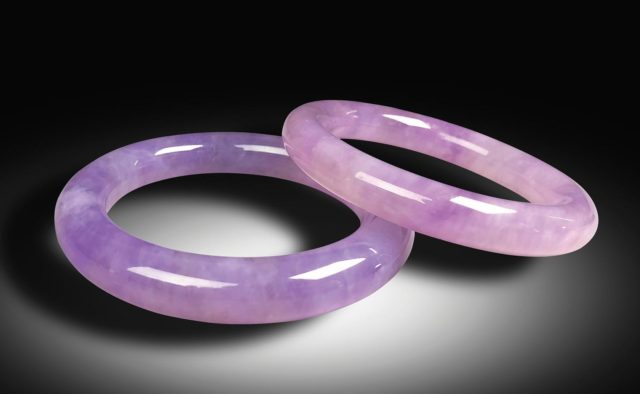
Estimated reading time: 21 minutes
Jade is treasured in China far more than diamonds, sapphires, rubies or gold. It has a cultural and spiritual significance that goes back thousands of years. You might even say it’s in the DNA of Chinese people. Confucius raved about it, comparing it to all that is good and pure in man. He said it embodied purity, intelligence, loyalty, truth, sincerity and chastity. A well-known saying in China is –黄金有价玉无价– gold has a price, but jade is priceless.
This was true thousands of years ago and remains true today. The modern Chinese jade industry employs hundreds of thousands of workers and has an annual turnover of billions of dollars. There are small cities, towns and villages dedicated to producing pendants, rings, bangles, necklaces, tea sets, goblets, figurines, statuary and almost anything you can think of made from jade. Prices range from a few dollars for a piece carved by machine in a factory to millions of dollars for a work of art created by a master.
Jade has been carved since the Stone Age. Myths and legends are full of stories about it. Three of the four great classics of Chinese literature, Romance of the Three Kingdoms, Journey to the West and Dream of Red Mansions are suffused with it. Nearly everyone seems to own a piece of it. Jade is revered in China.
It has long been common to hand down jade from generation to generation. Jades are family heirlooms in a way that items made of gold are not. If you damage something made from gold you can melt it down and refashion it in exactly the same way, but if you break a piece of jade, it is gone forever. Every stone is unique and cannot be replaced. There is the well known story of the wealthy collector who was about to buy a pair of beautiful, matched vases in white jade from a merchant for an enormous sum, but just as he was about to take possession of them, the merchant smashed one of the vases on the floor. He then demanded ten times the original price for the one remaining vase. His reasoning was that since there was now only one, the value had increased dramatically. In China, as in the rest of the world, the rarer something is, the greater the value – 物以稀为贵.
The fact that the industry is thriving today is something of a miracle. The art of jade carving was dealt a series of body blows in the first half of the twentieth century which almost saw it disappear in mainland China. The collapse of the Qing Dynasty, the chaos of the Warlord era, the ensuing civil war and Japanese invasion meant that ,by the time Mao took power in 1949, the craft had virtually died out. No one had any money to buy jade and artisans were reluctant to pursue a craft under a regime that frowned on anything that smacked of the past.
![Stunning jadeite carving by 庄庆芳 [Zhuang Qingfang], which shows how carvers are moving away from traditional designs and coming up with new ideas.](https://incolormagazine.com/wp-content/uploads/2020/12/47_Page_052_Image_0001-1024x541.jpg)
So perhaps it is ironic that it was the communists who began the revival. Beijing was dirt poor and desperate for foreign currency. There was still demand for jade from Chinese people who lived in places like Hong Kong, Taiwan and Singapore.
There was also some interest from collectors in North America and Western Europe. So, factories – state collectives – were set up in the late 1950s and early 1960s in cities such as Beijing, Guangzhou, Shanghai, Suzhou, and Yangzhou to cater for that demand. Old craftsmen were brought out of retirement to train a new generation of carvers and the modern jade industry was born.
Then again, it might well be the so-called Stone of Heaven was so entrenched in Chinese culture that it was inevitable that there would be a revival, even under the communists. After they took power, one of the things they did to move away from the imperial past was to simplify the Chinese language. They changed the ancient character for “country” to a pictograph which showed a piece of jade enclosed by four protective walls: 国.
For a regime that wanted a fresh start and to stamp out all things traditional, it seems strange that they would choose to include the symbol for jade in the new character for the communist state.
![Two paper thin vases carved by 茹月峰 [Ru Yuefeng]; 20 cm high with a combined weight of only 100 g.](https://incolormagazine.com/wp-content/uploads/2020/12/47_Page_053_Image_0001-807x1024.jpg)
The new jade industry approved by Beijing employed a few thousand workers and earned a few million dollars per year during the 1960s and 1970s. Then, in the 1980s, when China began to open up to the West, a flood of tourists increased revenue dramatically. The factories expanded and more apprentices were taken on.
It was this sudden increase in revenue that spelled the end of the state-run collectives. Craftsmen, earning about ten dollars a month, watched with increasing frustration as tourists paid more than they could earn in a year for simple carvings that had taken them a couple of days to create. They resented working in a collective where managers told them what to carve. They wanted to use their own judgment when it came to the pieces they made and earn far more than the few dollars per month that was doled out to them.
In 1989, they began to leave the factories, set up their own workshops and train their own apprentices. Business boomed. By the mid 1990s, nearly all craftsman had set up on their own and the state factories began to wither and die.
The next great leap forward was the emergence of the domestic market. China’s economic miracle was well underway and people had money. By the turn of the century, it was mainland Chinese citizens who became the main customers for jade. The newly rich, the millionaires and billionaires thought nothing of spending a fortune on it. Their enthusiasm was reflected in the growing middle class and even lowly paid workers who now found they had money to burn. The industry grew so rapidly that by the turn of the century hundreds of thousands of people were making a living from jade. Such was the Chinese passion for the so-called Stone of Heaven that it is estimated that more jade has been carved by the modern jade industry than in the rest of human history.
The quality of the work in the 21st century surpasses that of all jade carving done in the past. Craftsman have access to tools and techniques, which means they can carve exquisite detail previously unheard of. Those at the top of the tree can now shape jade almost at will and create masterpieces, which could not have been imagined even two or three decades ago.
Master carvers have looked abroad for inspiration and imposed new interpretations on traditional designs. One of the most popular carvings in China is that of Guanyin, the Goddess of Mercy, who hears all the woes of the world. One carver, now a famous master, borrowed heavily from European Renaissance depictions of the Virgin Mary. His blending of East and West launched his career and brought him to the attention of rich collectors. Walk into the workshop of any master carver today and there will be books about European art and culture sitting on the shelves alongside tomes about Chinese jade, calligraphy and painting. Jade associations now flourish throughout China. Exhibitions and competitions, in which carvers are encouraged to show their work, exchange ideas and techniques are held each year. One of the most famous, Zi Gang Bei, is held in Suzhou. In recent years the organizers have invited foreign jade artists to compete. The exchange of ideas between artists from two different cultures is already beginning to show in the work of a new generation of Chinese carvers.
![Carving in green jade by Master 张庆东 [Zhang Qingdong]. Carvings with such intricate detail are only possible with modern tools and techniques.](https://incolormagazine.com/wp-content/uploads/2020/12/47_Page_054_Image_0001-1024x834.jpg)
The biggest competitions publish books with photos of the medal-winning entries each year. Look at a such a book from just five or six years ago and compare it with one from today and you will see marked differences in style, technique and the type of jade used. Ten years ago, tradition was dominant. Today, the old masters are nervously looking over their shoulders at a younger generation of carvers dogging their heels. They are being forced to flex their creative muscles and come up with fresh ideas.
The old masters still hold sway. They are the ones who are revered for their dedication to one of China’s most ancient crafts. They may be tinkering with new concepts, but they are the ones who keep alive the old traditional designs. There are more than a hundred craftsmen with the coveted title of Chinese Jade Carving Master and the best of them are multi-millionaires who have benefited from the economic miracle and an almost insatiable demand from rich collectors for pieces carved from imperial green jadeite and mutton-fat white nephrite.
Forget about auctions for ancient jades. Auctions for pieces by modern masters generate at least as much cash. And it is probably fair to say the new jades are a far better investment. It is common knowledge that a lot of the archaic jades put up for auction are copies. This cannot be said of the works of modern masters. It is also generally recognized that the workmanship of the new pieces and the quality of the material they use is of a far higher standard than that worked in the distant past.
![A work entitled “Childhood Memories” in Edwards Black jade from Wyoming by Master 瞿利军 [Qu Lijun].](https://incolormagazine.com/wp-content/uploads/2020/12/47_Page_055_Image_0001.jpg)
The younger artists muscling their way onto the scene have far less respect for tradition. Many of these tyros have been educated at art colleges abroad. Their work is a fusion of the old and the new, the East and the West. Their customers are younger and also don’t seem to worry so much about tradition. They also don’t have as much money to spend as the generation before them. Their parents and grandparents will concentrate on the quality of the jade when they buy from an established master, but the new generation of consumers are more likely to focus on the design.
A good rule of thumb for a piece by an acknowledged master is that about 60% of the value is in the jade itself and about 40% in the fact that a master carver had created it. For the new generation of artists, 20% of the value is in the stone and 80% in the design. When they do use the best gem-quality jade, it is in much smaller pieces that they incorporate into jewelry with gold, platinum and other precious stones.
This is another leap forward in the world of jade. Jadeite from Myanmar has long been made into jewelry, but until the last decade it was far less common with nephrite. Now there are craftsman who specialize in nephrite jewelry and goldsmiths who cater exclusively to them. One of the reasons has to be the scarcity of mutton fat white which is almost impossible to come by. It is estimated that less than twenty kilos are now found each year in the White Jade River that runs through Hetian in Xinjiang province. And while there seems to be large amounts of the imperial and kingfisher green jadeite for sale in the markets of Guangdong and Yunnan there are clear indications that most of it is color enhanced. Even experts won’t buy the rough stone without having it tested in a lab because the techniques used to add color are now so sophisticated.
Gold and gemstones other than jade have always had their place in China. Throughout Chinese history gold, for example, has been a way for people to flaunt their wealth but it has never signified breeding and culture. A well-known saying in China teaches that in troubled times, you hide your gold but in time of prosperity you hide your jade – 乱世藏金 盛是藏玉. Gold is valued, but it just doesn’t have the same significance.
The same can be said for other precious metals and gems but there are signs that they are quietly and quite rapidly gaining in popularity. One of the reasons might be that, although China remain a communist state, it has embraced its own form of capitalism and personal wealth is no longer frowned on. The mighty dollar is king and western attitudes have influenced Chinese thinking. You are just as likely to see someone wearing gold and diamonds today as you are to see them wearing jade. The Stone of Heaven remains king, but precious metals and gems are catching up fast.
The new generation of craftsmen also sell their work in a different way. The older masters still rely on the personal approach, endless cups of tea or, dinner with favored clients, their network of contacts, the cachet that comes with their own exclusive brand and auctions for a select clientele with money to burn. The new generation are not so patient. They sell on the Internet, use live streaming and a variety of online platforms that show short video clips and lifestyle inserts, much like Internet personalities in the West. Sometimes it almost seems that the jade is secondary.
One successful young artist is often shown working out in a gym, riding a Harley Davidson and picturing his latest tattoo. His carvings are tiny, but he makes a decent living. His half naked body, finely sculpted in a gym, seems almost as important a creation as the jade he sells. This new generation might not have the same reputation and fame as the old masters, but the most successful of them make a lot of money – just in a different way.
I know of one enterprising young carver who sold sixty jades in sixty seconds when he started using an online platform. He considers this far more preferable to sitting down for a couple of hours with a client in his gallery, drinking tea and maybe, just maybe, selling one item. The sixty jades were all the same design, modeled on a computer, pre-formed by CNC and finished by hand. He doesn’t go online that often, maybe twice a month and only for a couple of hours at a time, but he says it’s his shop window – not his workshop and gallery. He has little interest in gaining the highly prized title of Chinese Jade Carving Master – 中国玉石雕刻大师. It might give him great face, but the hoops he has to jump through and the politics involved make it more trouble than it’s worth. Gone are the days when it was the only route to riches for a craftsman.
Another interesting point not usually noticed is that not a single carver who has the vaunted official title of Chinese Master Carver speaks English. After all, they have no need, as there is little interest in their work in the West. The new generation on the other hand are sprinkled with artists who have studied abroad. Some of them are fluent and many have at least a smattering of the language. There are no master carvers on Facebook, but a growing number of, younger, bilingual craftsmen have their own pages and are now trying to sell their wares to the West.
The move away from the traditional way used by the older generation to sell their work might well have been speeded up by the lockdowns imposed all over the world by Covid19. More and more people have moved to buying all sorts of goods – including jade – online. Before the virus struck, 80% of my sales were from my gallery and only 20% online. Now 80% of my customers buy online and only 20% come in person to buy. I do not see this trend reversing.
![Jade jewelry with gold and diamonds carved by one of the only female master carvers in China, 程磊 [Cheng Lei].](https://incolormagazine.com/wp-content/uploads/2020/12/47_Page_056_Image_0001-1024x680.jpg)
Language is a barrier which makes a true understanding of Chinese jade culture difficult for the foreigner and westerners in particular. A great example of this is the definition of jade. To the Western mind it is an umbrella term for nephrite, which has been carved in China for around eight thousand years, and jadeite, which has been popular in China for about two hundred years. Professor Gina Barnes in a paper titled Understanding Jade in a World Context published in the British Academy Journal defined “true jade” as these two stones. At about the same time Trudy Kwong presented a paper at a seminar of the Geological Society of Hong Kong where she defined “authentic” or “real” jade as nephrite and jadeite.
Yet in China, the word jade is usually translated as 玉 [yù], which has a much wider meaning. It can describe any precious and beautiful carved stone. Many years ago, John Goette, in his book Jade Lore, which is still avidly read by those who come to love jade, translated yù as a stone possessing the cardinal virtues – pure, precious, valuable and beautiful. If you ask the Arts and Crafts Association of China
how many people work with 玉 [yù], they will tell you more than a million. Closer questioning will reveal these include all those who work with agate, lapis lazuli, carnelian, rock crystal, serpentine and even bone or amber.
The research division of China’s Collectors Association might well give you a similar answer. Yet another body, the 宝玉石协会 [Băoyùshí Xiéhuì] which translates as the Gems, Jade and Stone Society, limits gems to precious stones as defined by the West, but includes agates, serpentine and lapis lazuli in the jade category. (Its final category of stone is reserved for Seal Stones – an entirely separate craft).
It is quite common to see carvings of rock crystal, agate, serpentine and other stones entered in some of the annual exhibitions and competitions organized by jade associations. The most famous jade exhibition/competition, 天工将 [Tiāngōng Jiăng] held each year in Beijing does not limit its entries to nephrite and jadeite.
There exist different styles/techniques for different stones. Nephrite, for example, is traditionally divided into the northern or imperial style and the southern, romantic style. There is even a saying about it – 南方才子佳人,北方帝王将相, which roughly translates as “in the south they concentrate on brains, romance and beauty, but in the north, it’s all about emperors, generals and ministers of state.”
It is more common in the northern style to come across carvings of royalty, great military figures, dragons and horses, while the southern style based around Suzhou and Yangzhou is more about broken hearts, beautiful maidens and bucolic scenes.
This has a historical basis. The northern style is attributed to a Taoist monk in the Yuan Dynasty who founded the White Cloud Temple in Beijing. His love of jade came from watching artisans at work carving the stone when he was growing up in Shandong province.
The southern style on the other hand has been heavily influenced by the most famous carver of all, Lu Zi Gang, who grew up in Jiangsu province and tended to concentrate on the romantic and bucolic. He is so highly thought of that there is a small town in the neighboring province of Anhui which concentrates on producing copies of his work.
And every jade carving center has its own specialty. Yangzhou is famous for carving large mountain scenes in nephrite,
Sihui near Guangzhou remains the go-to place for large jadeite carvings, Jieyang in the same province is famous for high quality expensive jadeite, while another city produces enough bangles to supply the entire Chinese market.
But things are changing so fast that the accepted wisdom of the past no longer holds. Sihui still dominates the market in large jadeite carvings, but that market has shrunk so much it has begun to specialize in much smaller pieces, designed using software and created by computer-controlled machinery. You can now download thousands of designs for less than a dollar each that can be fed into your computer-controlled carving machine. Then, with little more than the click of a mouse, you can leave the machinery to get on with the job. This may be the future, even for high-end carvings and jewelry. Nearly all the mílèfó 弥勒佛 (Laughing Buddhas) in imperial green jadeite that are for sale in the markets in Guangdong and Yunnan are carved using computers. The going rate for a carver who specializes in carving Laughing Buddhas is about US$2000 per month. You can buy a computer-controlled machine to do the same job for about the same price. Why pay a craftsman US$24,000 per year when a machine can do the same job for a fraction of the cost and take less time to do it? The machinery doesn’t become ill and you don’t have to pay it during lulls in demand. The gold and gems in which the Laughing Buddhas are usually set are still done by goldsmiths but one wonders for how long? After all, if they can build a car with robots, then why not let robots produce a popular design in jade jewelry which is sold on an industrial scale?
One perhaps regrettable development in the modern jade industry is the lack of female artists. There were considerable numbers of women carving jade when the state-collectives were in operation, but there are few today. There are also few female master carvers, two perhaps. Both elegant and talented ladies who concentrate on design and jewelry. In some ways, mainland China has a long way to go before achieving anything like equal opportunities for the sexes in the workplace.
To sum up, the quality of workmanship and material used in the jade industry in China is of a standard never before seen. Prices have rocketed in less than thirty years and although there have been blips in the market where prices have occasionally dipped for a short while the trend is ever upwards. The price and popularity of high-quality jade and jade jewelry usually mirrors how well the economy is doing.
![A jade, gold, diamond and ruby ring by 马瑞 [Ma Rui], exemplifying the growing interest in high quality jade jewelry.](https://incolormagazine.com/wp-content/uploads/2020/12/47_Page_057_Image_0001-1024x958.jpg)
What are classified as true jades, in both the East and the West, seem to be jadeite and nephrite. The best jadeite still comes from Myanmar although some is now being imported from Guatemala. The best nephrite is still found in the White Jade River in Hetian in Xinjiang province in northwest China, but this is now virtually exhausted. To get around this sticky problem, all nephrite is now classified as Hetian Jade (和 田玉). Take any piece of nephrite to an official government testing center – be it from Canada, Russia, Yemen, South Korea etc. – and it will be classified as Hetian Jade. As a result, most of the white jade carved in China for jewelry, bangles and pendants comes from other parts of Xinjiang, or neighboring Qinghai province, or from Russia and South Korea.
The trend is now towards jewelry and smaller carvings. The official Chinese Jade Carving Masters still dominate the high end of the market and continue to fetch extremely high prices for their work, which are generally considered an investment. They are now being challenged by a younger generation of artists who have less respect for tradition, concentrate more on design than the quality of the material they use and tend to go online to find their customers.
While nephrite and jadeite are generally considered true jades in both East and West, there are significant numbers of carvers and artists in China who use other stones such as agate, lapis lazuli, rock crystal and serpentine. They are doing some astounding work and are often mentioned in the same breath as Chinese Jade Carving Masters.
In the past, it would have been fair to say that each region had its own style, but the lines have now become blurred as more and more artists have studied at art colleges abroad and picked up new ideas. Perhaps the biggest changes are the moves towards CNC carving (for the mass market) and jade jewelry. Design is now beginning to have an equal footing with the quality of the material, something that would have been unheard of even a decade ago.
There are those in the older generation who worry that the current generation (and future generations of Chinese people) will forget the special place that jade has in society. They need not worry. It is too deeply embedded in the Chinese psyche. When Beijing started launching rockets into space and planning lunar landings it asked the people to choose the name of the first probe to the moon. The overwhelming vote was in favor of calling it the Jade Rabbit. In Chinese legend, it is a jade rabbit that stands beside the Moon Goddess and uses a pestle and mortar to pound the elixir of immortal life. The inhabitants of the Middle Kingdom have not forgotten their heritage and will continue to buy jade. The problem for the future is where this material will come from. China already vacuums up all the quality jade found throughout the world. Gem quality is increasingly rare. It’s a finite resource that will eventually run out.
References
- Barnes, G.L. (2018) Understanding Chinese jade in a world context. Journal of the British Academy, Vol. 6, pp. 1–63.
- Goette, J. (n.d., ca. 1936–37) Jade Lore. New York: Reynal & Hitchcock, 1976 edition by Ars Ceramica with an introduction by William C. Hu, 321 pp.; RWHL*.
- Kwong, T. (2015) Geological settings and formation of jade. Public presentation to Geological Society of Hong Kong.
Images and text: © 2020 Andrew Shaw. All rights reserved.
















